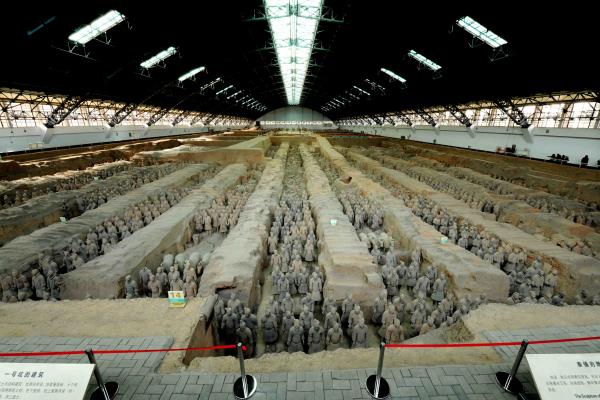
How Big is the Mausoleum of Qin Shi Huang?
The Mausoleum of Qin Shi Huang, the first emperor of a unified China, is a sprawling underground city located in Lintong District, Xi'an, Shaanxi province, China. Construction began in 246 BC and lasted for 38 years, involving over 700,000 laborers. This UNESCO World Heritage Site is renowned not just for its historical significance but also for its immense size. So, how big is the Mausoleum of Qin Shi Huang exactly? Let's delve into its vastness.
A City for the Afterlife
The entire mausoleum complex covers an astonishing area of 56 square kilometers (approximately 21 square miles). To put that into perspective, it's about 78 times the size of Vatican City! This massive area is divided into two main parts:
- The inner city: This is where the emperor's tomb is located, along with the burial pits containing the Terracotta Army and other artifacts.
- The outer city: This area encompasses various pits containing the remains of sacrificed laborers, workshops, and tombs of imperial concubines.
The Emperor's Palace Below
The design of the mausoleum reflects the grandeur and ambition of Qin Shi Huang. It symbolizes the emperor's actual palace when he was alive, complete with inner and outer walls, government offices, and a grand imperial court. The entire complex was meticulously planned, showcasing the advanced architectural and engineering skills of the Qin Dynasty.
A Soccer Field-Sized Burial Chamber
The rectangular-shaped burial chamber of the emperor, situated in the middle of the palace, is about 15m high, 100-110m long and 64-75m wide - about the same size as a soccer field. Historical records describe a ceiling adorned with celestial constellations and a floor representing the emperor's vast territories. It is believed to contain vast treasures and to be booby-trapped with ingenious mechanisms.
More Than Just a Tomb
However, the Mausoleum of Qin Shi Huang is much more than just a tomb. It's a microcosm of the emperor's empire, designed to provide him with everything he needed in the afterlife. The discovery of the Terracotta Army, a vast collection of life-sized terracotta soldiers, horses, and chariots buried near the emperor's tomb, is just one example of the incredible scale and ambition of this ancient project.
Unearthing History
While the main tomb itself remains unexcavated due to conservation concerns and potential dangers, ongoing archaeological excavations continue to reveal astonishing details about the mausoleum and the life and times of Qin Shi Huang. Each new discovery adds to the mystique and grandeur of this remarkable testament to ancient Chinese civilization.
FAQs
1. Why was the Mausoleum of Qin Shi Huang built so large?
The sheer size of the mausoleum reflects Qin Shi Huang's immense power and his belief in an elaborate afterlife. It was designed to be a replica of his earthly empire, complete with everything he would need to rule in the afterlife.
2. What is the significance of the Terracotta Army?
The Terracotta Army is believed to have been placed within the mausoleum complex to protect the emperor in the afterlife. It is a powerful symbol of the military might of the Qin Dynasty and a testament to the emperor's desire for eternal power.
3. Why hasn't the main tomb been excavated yet?
Despite decades of research, the main tomb remains unexcavated due to concerns about potential damage to the artifacts within. The technology needed to safely excavate the tomb while preserving its contents is still under development.
note: This return of all, without the author's permission, may not be reproduced